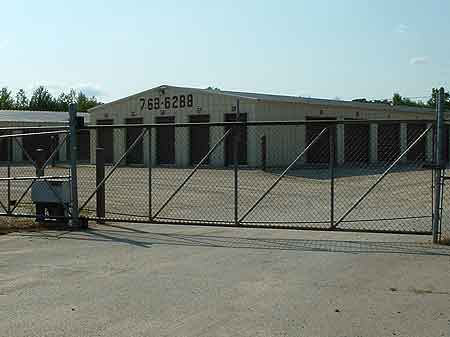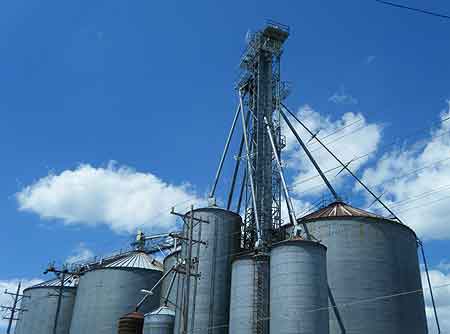Article and photos by Gregory Havel
Among the locations to which firefighters and emergency responders can be called to work are “special structures”–those not designed for human occupancy, but for the use of communications, energy transmission, or commodity storage. Although they are not normally occupied, people are employed to maintain them and care for their contents. Tenants or subcontractors may be present at any time. Although the structures themselves can be classified as noncombustible or fire-resistive, their contents may be combustible or flammable; and the energy they use or transmit can be an ignition source.

(1)
Photo 1 shows part of a complex of “mini-warehouses,” designed for the storage of household goods or as off-site storage for businesses. Each unit in the building is separated from the remainder of the units by noncombustible walls, and secured by a lock supplied by the tenant. There usually are no master keys for the buildings. These facilities usually do not have heat or air-conditioning, although some may have electricity for lighting and convenience receptacles.
The primary hazard to emergency responders at a mini-warehouse is the combustible storage, although these units have also been used for storing hazardous materials, for manufacturing processes, and even as temporary housing. Access is often restricted by a security fence, which requires a key or access code in addition to the locks used to secure individual units.

(2)
Photo 2 shows a wireless communications facility; a tower and a transmitter building are inside a security fence. This type of facility receives and transmits cellular telephone and data signals, uses electrical power, and often has a stand-by generator or a rack of storage batteries and chargers for use in the event of a power failure. The tower in the photo has its cables inside the tower; and the access ladder for service workers is on the outside. Other types of towers may have other arrangements, including access ladders or elevators inside the tower.
The primary hazard for emergency responders at a communications facility is electrical and radio-frequency energy. Before attempting to rescue a tower worker (high-angle rescue) or to put out a fire, disconnect and lock out both primary and battery power as required by the Occupational Safety and Health Administration’s (OSHA’s) 29 CFR 1910.147. If there is an electrical fire, disconnecting the energy source will usually extinguish the fire.

(3)
Photo 3 shows a grain storage facility with multiple steel bins and an elevator leg that is used in filling and emptying the bins, unloading the farmer’s grain trucks and trailers, and loading transport trucks and rail cars. A complex like this may or may not have a security fence.
The primary hazard for emergency responders at a grain storage facility is the combustible grain, as well as the potential for a grain dust explosion. Other hazards are the electric power to the many motors needed to run the elevator leg and conveyors; the stored or piped-in fuel for the grain dryers that are often present; and the many permit-required confined spaces that are present, as classified by OSHA’s 29 CFR 1910.146. Before attempting to rescue a worker on the elevator leg (high-angle rescue) or to put out a fire in a motor, disconnect and lock out all energy sources, as required by OSHA’s 29 CFR 1910.147. If there is an electrical fire in a motor, it will usually self-extinguish when the energy is disconnected.
Most of the motors and electrical energy at a typical grain storage facility are controlled and operated from a single control room or building. Most of the motors are in inaccessible places, such as at the top of elevator legs or in pits or tunnels (confined spaces).
For more information on grain-storage facilities, see “Construction Concerns” 09/27/2010.
For more information on OSHA’s requirements, visit www.osha.gov; select “Standards,” select “1910 General Industry,” and select 1910.147 for Isolation of Energy Sources or 1910.146 for Confined Space Entry.
Download this article as a PDF HERE.


